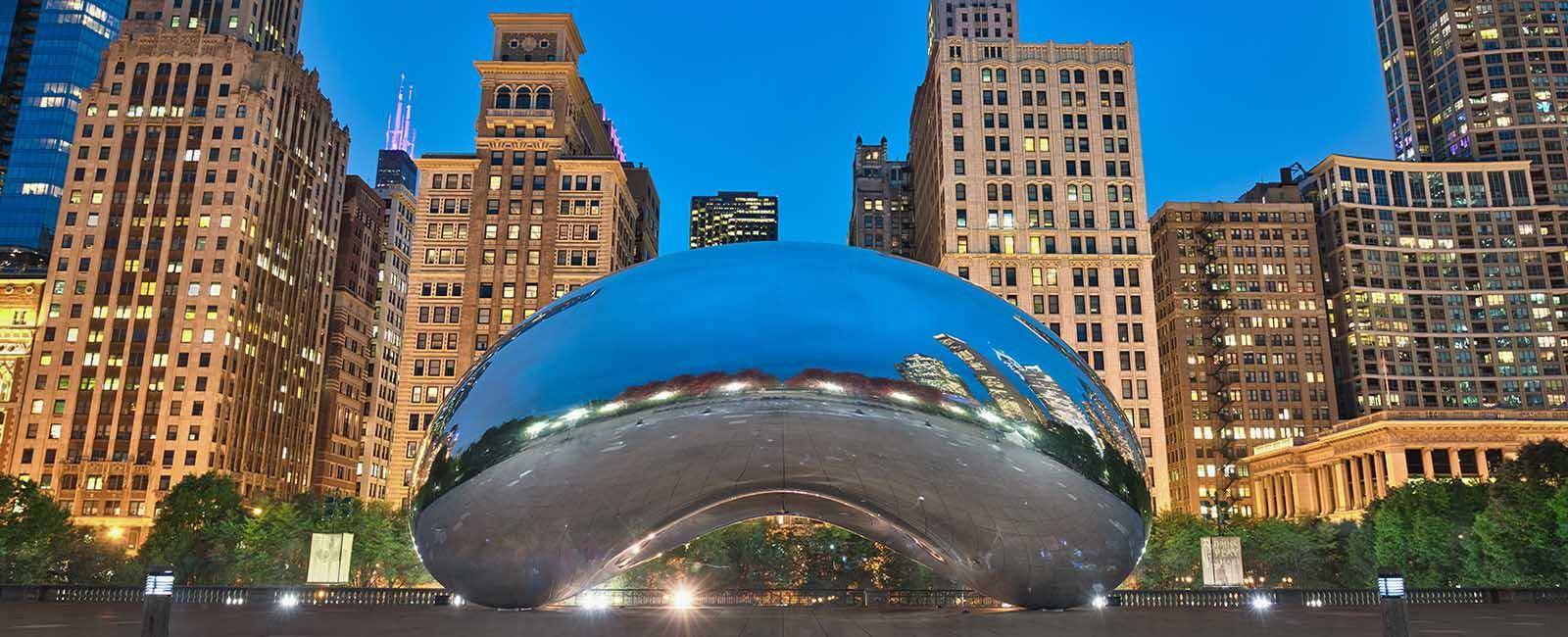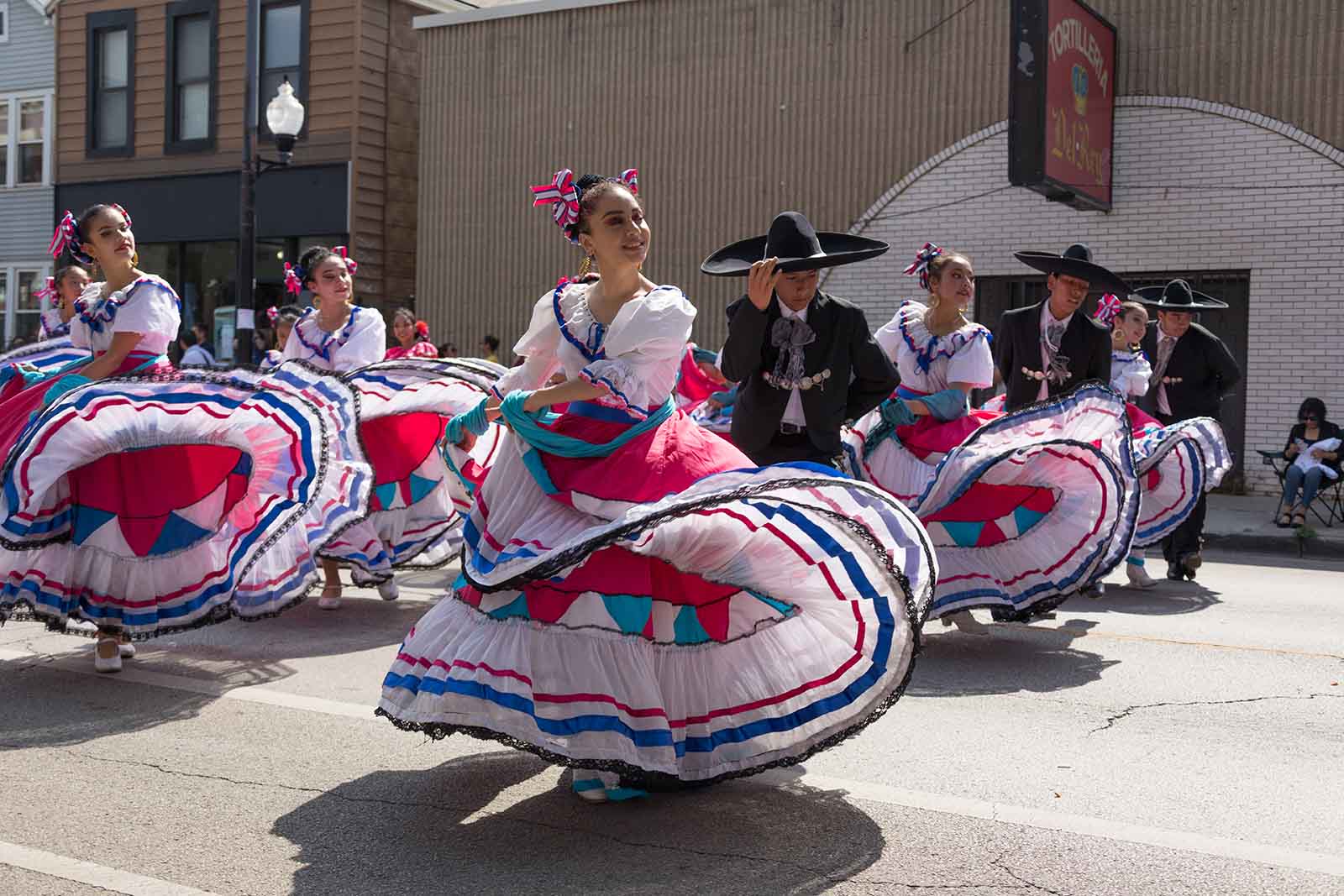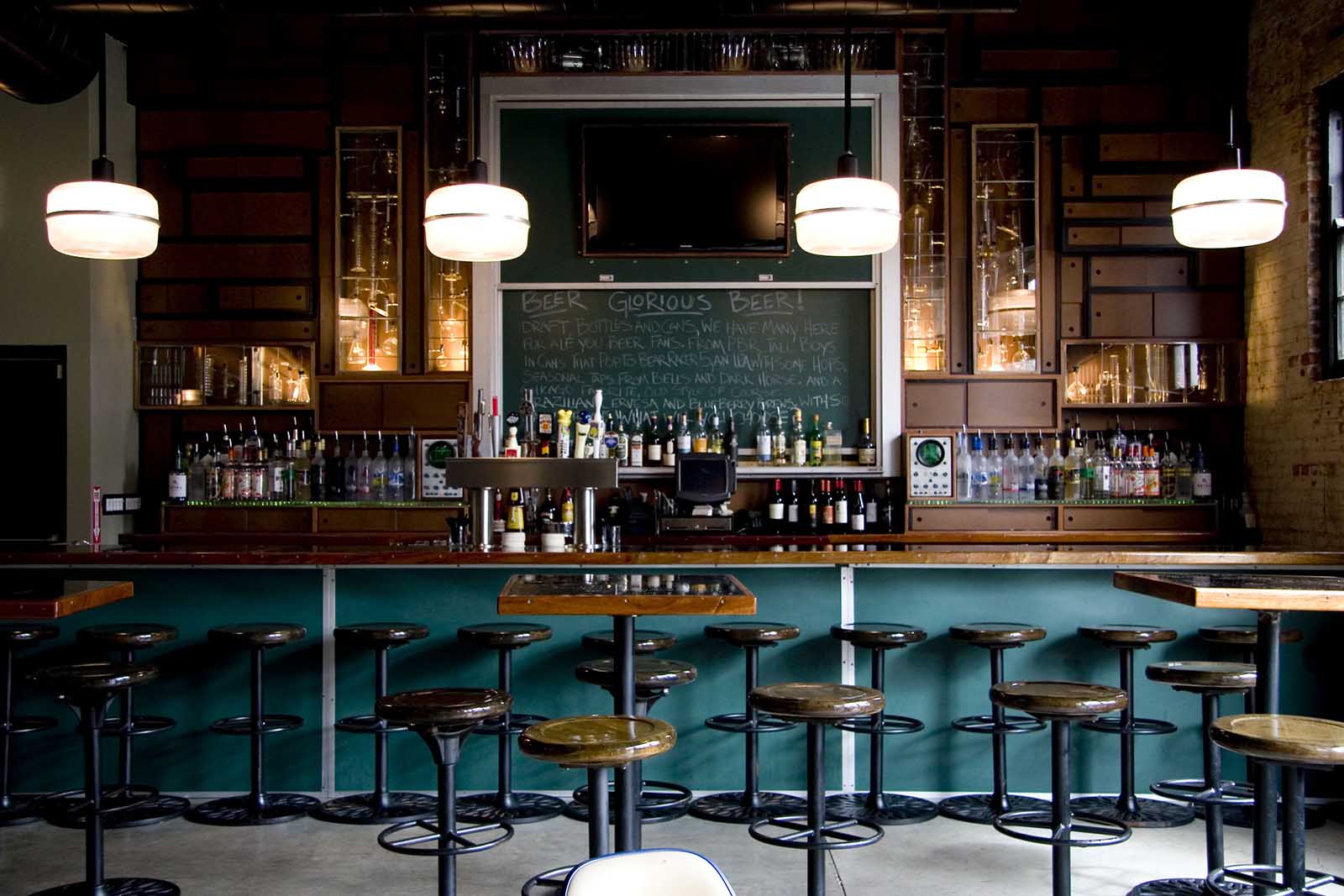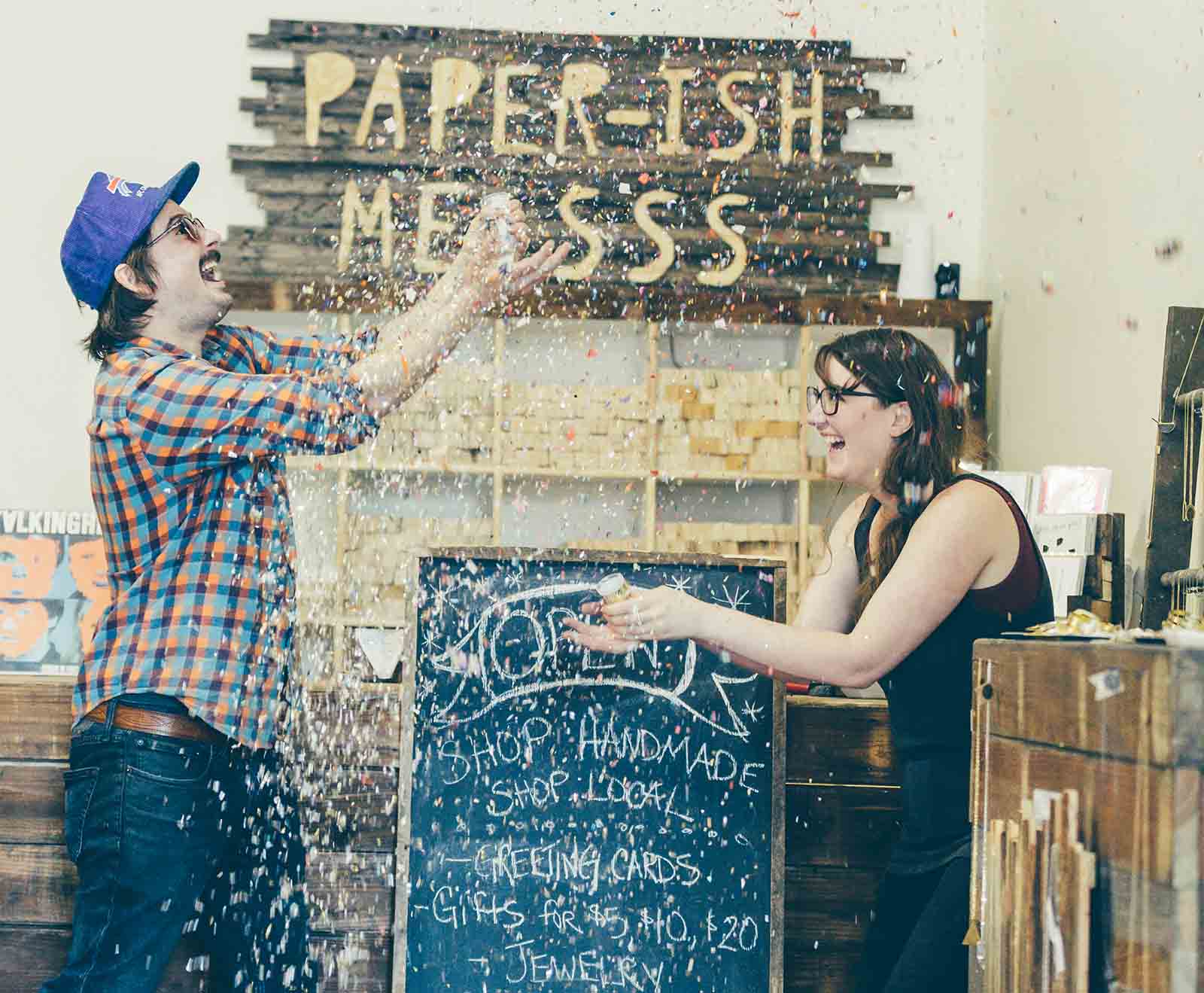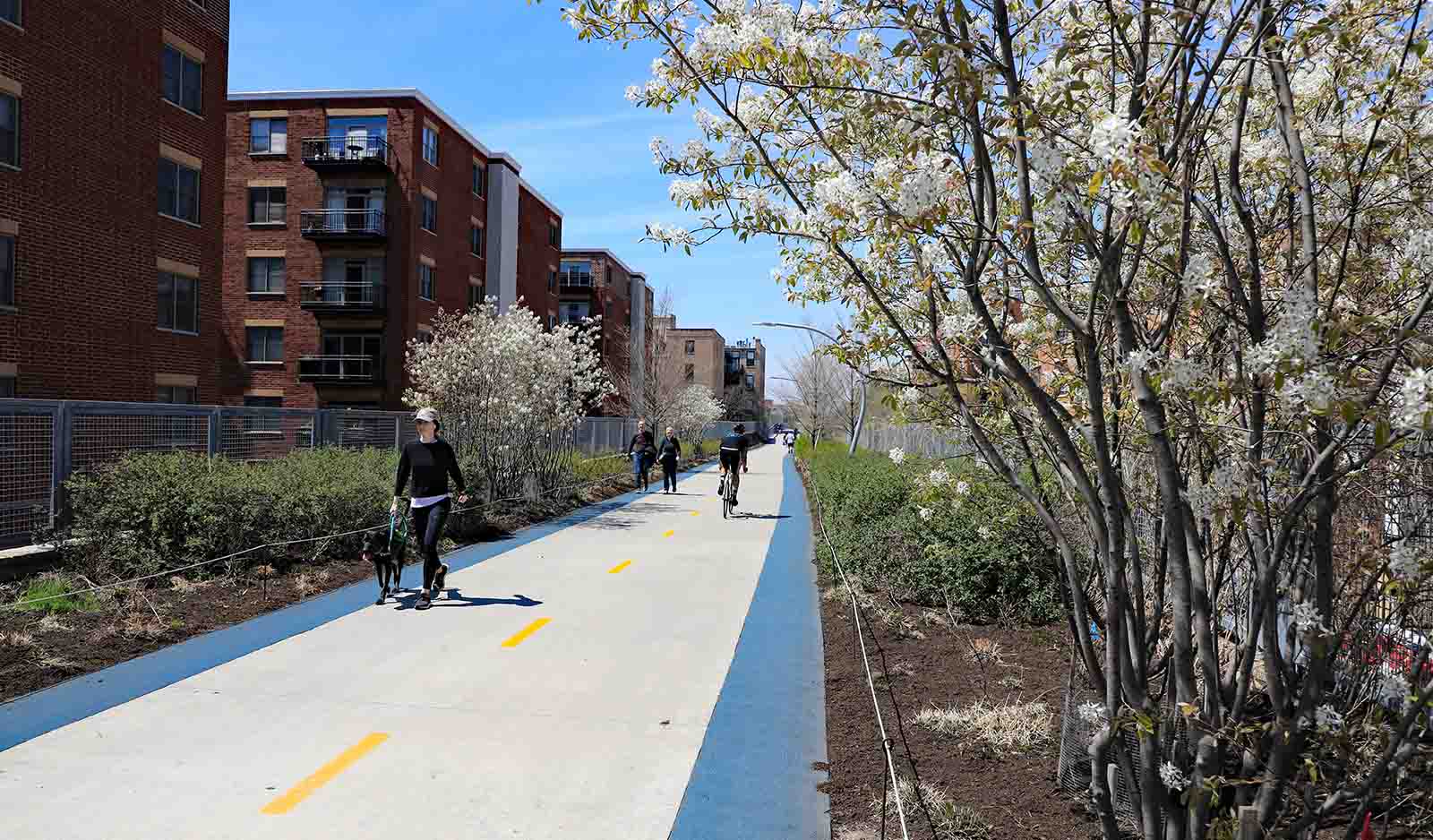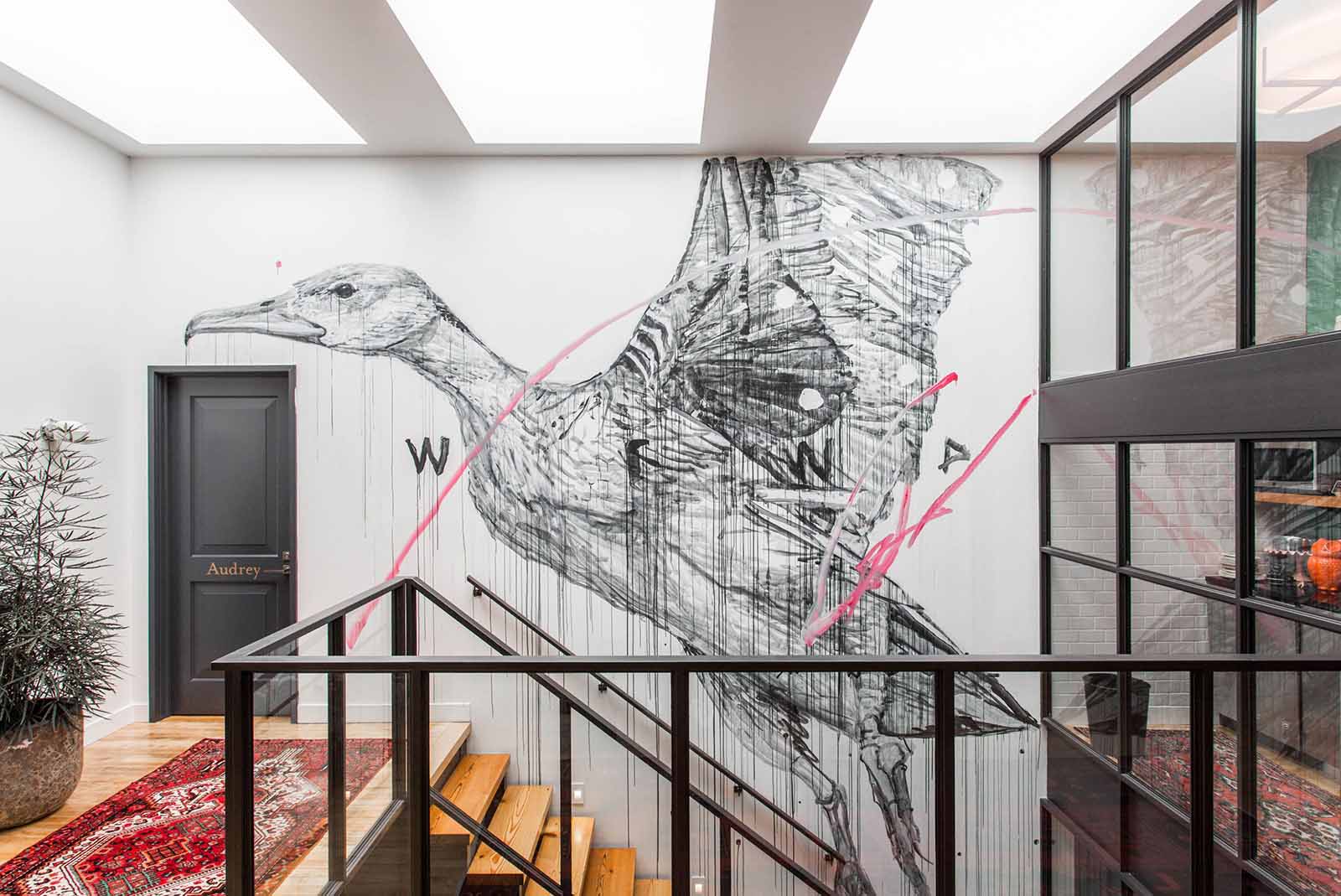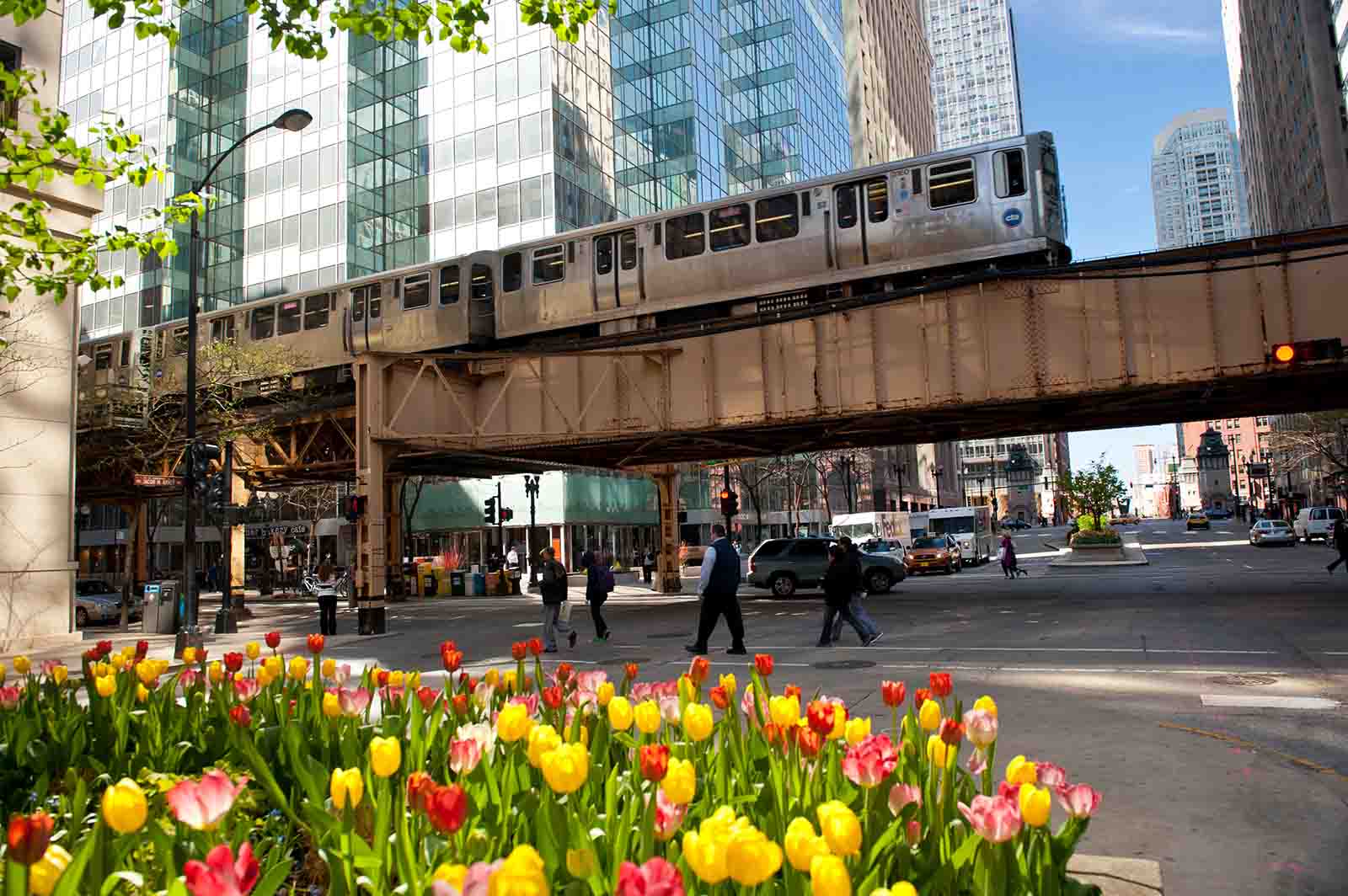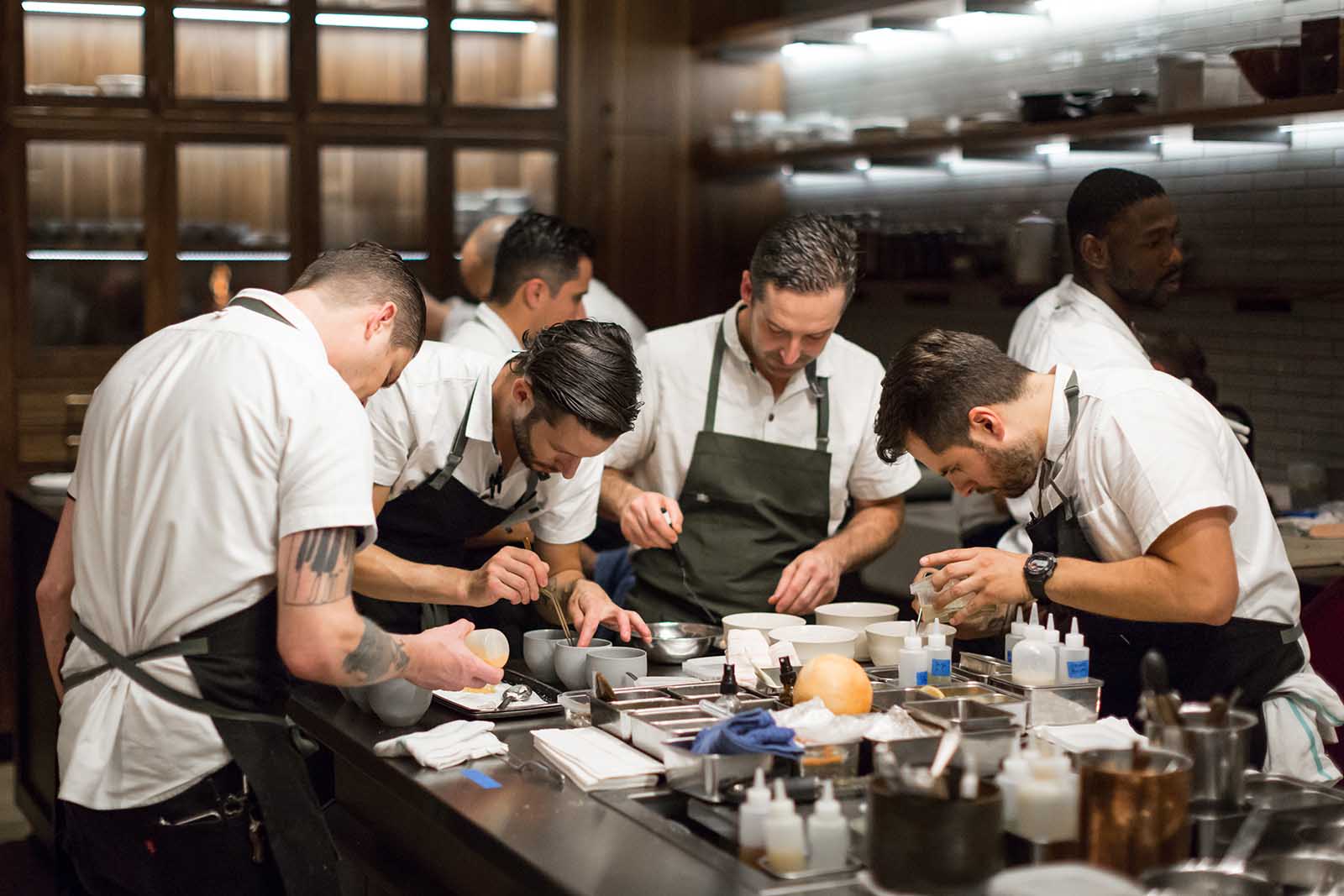
To discover the creative, culinary and cultural diversity of the city venture into the neighbourhoods and put these at the top of your list.
The Windy City might be famous for its deep-dish pizza, ballparks, beer and blues, but it’s also a city of more than 200 neighbourhoods which display a creative, culinary and cultural diversity that reveals a lot about its character, past and present. To discover it you’ll need to detour from the big brands on Michigan Avenue, beyond the Magnificent Mile, ‘The Bean’ and Millennium Park, and head west of the river. Once you’ve checked the major attractions off your list, map out an adventure using the CTA ‘L’ train lines as a guide and see the city as the locals see it. These are just a few of those neighbourhoods to put at the top of your itinerary.
West Loop
From the American Civil War (1861-1865) to the 1920s, Chicago was the meatpacking capital of the United States and nicknamed the “hog butcher for the world” as it processed a staggering 12 million cattle and pigs each year by the turn of the 20th century, more than anywhere else in the world.
While our carnivorous past lives on today, with more than 250 steakhouses dotting the city, that meatpacking district is now the city’s most quickly evolving neighbourhood and Randolph Street has become known as ‘Restaurant Row’ for the proliferation of new openings over the past several years.
Executive chef John Manion is a 20-year veteran of the local restaurant scene and at El Che Steakhouse & Bar, his latest venture with partner and co-owner Daniel Boyd, he puts an Argentinean twist on Chicago’s steak tradition. Diners can take a front row seat at the chef’s counter for the best views of all the charring and grilling that takes place over a massive open flame and chefs happily answer questions while they cook for an experience as spirited as the dishes that are served.
For an even closer look at the meat you’re eating, chef Rob Levitt has pioneered the nose-to-tail whole animal cooking movement in Chicago for a decade and hosts classes at Publican Quality Meats that not only show how to break down a pig or cow but are a great way for foodies to learn about more unusual cuts of meat while enjoying some house-made charcuterie.
But this foodie hot spot is not all about the meat. Vegetarians and vegans are well-catered for with dishes such as crispy togarashi carrots and lobster mushrooms al pastor at aptly named Bad Hunter and the area is well populated with Michelin stars – Oriole, Smyth, Elske, Blackbird and Yūgen (see our ‘Luxe for Less’ tips) among them.
Pilsen
South of the West Loop, Pilsen is the heart of Chicago’s Mexican-American community where vibrant public art and colourful murals carry messages of hope, love and beauty throughout the neighbourhood.
Murals have a long history in Mayan and Aztec cultures and anti-Vietnam War murals began appearing in Pilsen in the 1960s as a way of combining art with activism. Today, a new generation of artists including Shelby Rodeffer, Gaia and graffiti artist Ruben Aguirre are making their voices heard.
The National Museum of Mexican Art houses more than 9000 artworks celebrating Mexican culture and history from ancient Mesoamerica to present day. Admission is free and the museum often hosts special events for dance, music, literature and theatre.
The neighbourhood is also a hub for contemporary urban art and emerging community talent, supported by artists such as Teresa Magaña and Pablo Ramirez at their gallery and store, Pilsen Outpost, where exhibitions change monthly.
This is also the place to taste Chicago’s most authentic Mexican food – huevos rancheros at Lupita’s or tacos on freshly made corn tortillas at 5 Rabanitos or Carnitas Uruapan (which also serves excellent menudo, a spicy beef tripe stew) are just a sample.
After dark, Simone’s bar and grill is a local favourite, full of character with its reclaimed architectural artifacts, a bar-top built from a bowling alley lane, graffiti-scarred high school chemistry table tops and booths built from old pinball machines. Blackened tuna steak is about as fancy as it gets on the menu which is light on the wine but has a colourful craft beer selection and there’s something going on almost every night, from games and salsa dancing to local DJs and a playlist that mixes it up from Motown to rockabilly and rap.
Indie bands are top of the playlist too at Thalia Hall, an historic landmark building which also houses Punch House in the basement, focussed entirely on cocktails designed to be shared (although you can get them by the glass as well as in a carafe or bowl)!
West Town
A kind of nebulous neighbourhood between the United Centre and hipster hotspot Wicker Park, West Town is often overlooked but its down-to-earth, blue-collar vibe is quintessential Chicago. Waves of immigrants from all over the world have shaped the neighbourhood into the creative enclave it is today, where you can find an Old-World pierogi (Polish dumplings) joint, a nature-inspired brewery, and a contemporary Japanese omakase spot all on the same street.
Chicago is home to more than 160 breweries – more than any other American city – and great craft breweries are scattered throughout the city, but the new Chicago Brewing District which overlaps with West Town has one of the best concentrations. Refuel here after a visit to the Ukrainian National Museum and the Ukrainian Institute of Modern Art, a legacy of the area’s Eastern European heritage.
Forbidden Root is Chicago’s first brewery dedicated to botanical beers, flavoured with herbs, leaves, flowers and bark. Since it opened in 2016 it has been named one of the best brewpubs in the country and has a reputation for serving a level of food with its beer that’s more on the level mostly seen with wine pairings. My favourite is the sparkling rosé ale, a cross between wine and beer, but their strawberry basil hefeweizen is a bestseller. New, experimental, pub-only beers are served each week, so there’s always an element of surprise which adds to the fun of a visit here.
The shopping in West Town is creative too. Dovetail has one of the best curated collections of vintage and hand-made men’s and womenswear in Chicago, while Paperish Mess, run by husband and wife team Lisa (visual artist/jewellery maker/curator) and Sean Murty (musician/designer/woodworker) features hundreds of makers and artists, from woodworkers and jewellery makers to visual artists, in a shop and gallery with rotating shows. They also have pop-up workshops so you could make your own unique crafty souvenir of the city. Or channel your creative side at a glass blowing class at Ignite Glass Studios and make your own water tumbler, vase or paperweight to take home. The adjacent gallery of glass art is full of inspiration.
Logan Square
Further afield and a bit more residential, the leafy boulevards of Logan Square are home to one of Chicago’s most diverse neighbourhoods, built on a mix of Latino, African-American and Eastern European cultures. Now The 606 runs through it, an abandoned rail line transformed into a greenway and trail for cyclists, walkers and joggers. It’s even longer than The High Line in New York and hosts public art exhibits and community events throughout the year.
The year-round Logan Square Farmers Market (outdoors May-October) is a great way to meet locals every Sunday while enjoying Midwest produce, cheese, charcuterie and pastries.
Bohemian bistro Lula Cafe can be credited with pioneering Logan Square’s ambitious indie culinary scene when it opened 20 years ago and today the neighbourhood is a global feast, from flavoured house-brewed chai tea paired with Kathmandu chicken dumplings and Nepalese at Chiya Chai, to-die-for tagliatelle and agnolotti filled with seasonal produce from the family’s Illinois farm at Joe Frillman’s Daisies, modern Mexican at Dos Urban Cantina and rustic Alpine-inspired fare at Table, Donkey and Stick too.
Save room for dessert from the inventive and nostalgic novelty treats at Pretty Cool Ice Cream or hand-rolled chocolate truffles at Katherine Anne Confections.
WHERE TO STAY
The Publishing House B&B, 108 N. May Street, West Loop. The former Free Methodist Publishing House was built in 1909 and has been reimagined with just 11 unique ensuited rooms and expansive shared living and dining areas. Randolph Street’s restaurants and bars are just a block away and it’s not far from downtown Chicago and the United Centre.
The Hoxton, 200 N. Green Street, West Loop. Located in the Fulton Market District, one of Chicago’s most creative, food-obsessed and artistic neighbourhoods, brimming with galleries, boutiques, and some of the city’s best bars and eateries, (including the nearby ‘Restaurant Row’).
The new ‘Working from –’ co-workspace facilities opened in 2019, with prices from $30 for a day pass, or travelling business guests are welcome to perch in the lobby for free, on comfy seats with free WiFi, plenty of device pit stops and food and drink on tap. There’s also a wellness studio and a rooftop pool for guests.
The Robey, 2018 W. North Avenue, Wicker Park. An 89-room boutique hotel occupying two distinctly different landmark buildings in Chicago’s Wicker Park neighbourhood – a limestone Art Deco structure known colloquially as the Coyote Building and an adjoining old fireproof warehouse. Café Robey and the Up Room rooftop cocktail lounge are the cool spots to hang out.
NEED TO KNOW
- Qantas flights from BNE will arrive and depart from O’Hare International Airport, about 26km from downtown Chicago (direct flights start in April 2020).
- The Chicago Transit Authority (CTA) Blue Line ‘L’ Train runs 24/7 and connects directly between O’Hare and downtown.
- Australian passport holders qualify for the Visa Waiver Program (VWP) and should only need to apply for an electronic stamp for entry for 90 days or less.
- Chicago follows a grid system which is easy to navigate. Eight blocks equals about 1.6km if you’re walking.
- Take a Chicago Greeter tour.
- Get around on the L trains; Divvy bike share (there are more than 200 designated bike lanes or paths around the city); Uber and Lyft; or water taxi to major attractions.
- Temperatures range from about 10-21°C in spring, 26-33°C in summer and below zero in winter with snowfalls.
- Sales tax is 10.25 per cent.
- Tipping is required – 20 per cent for standard service; 25 per cent plus for exceptional service.
GETTING THERE

